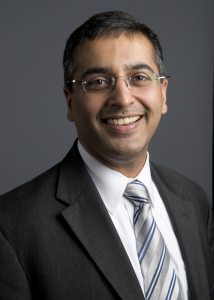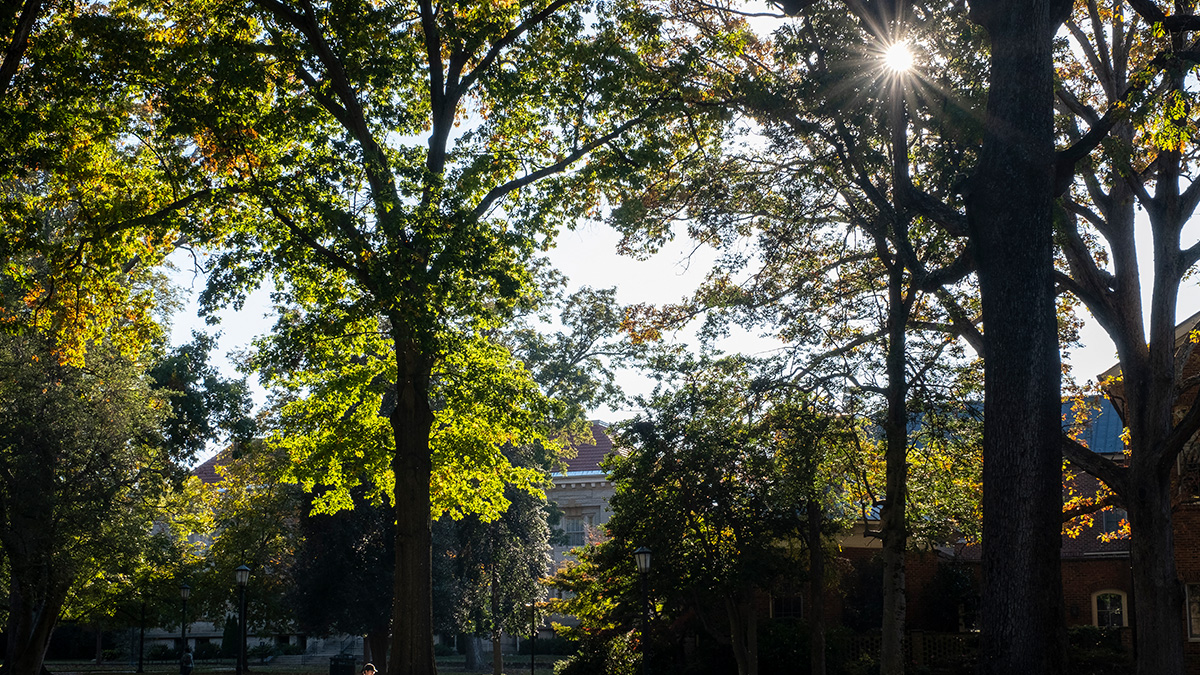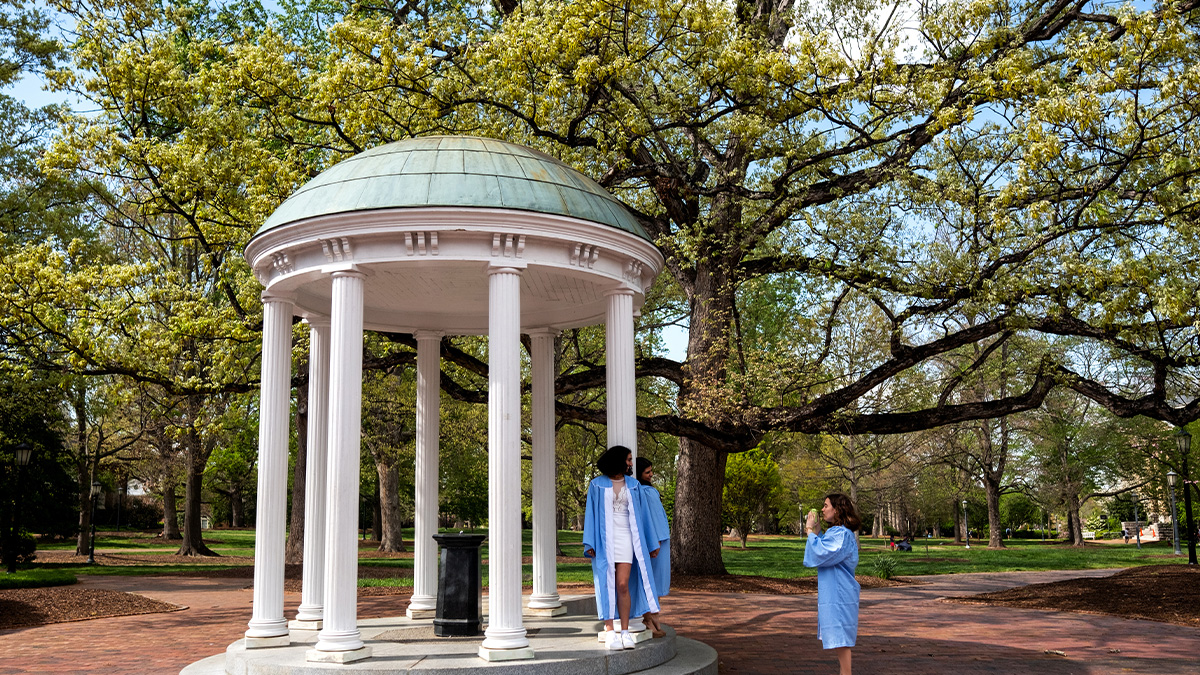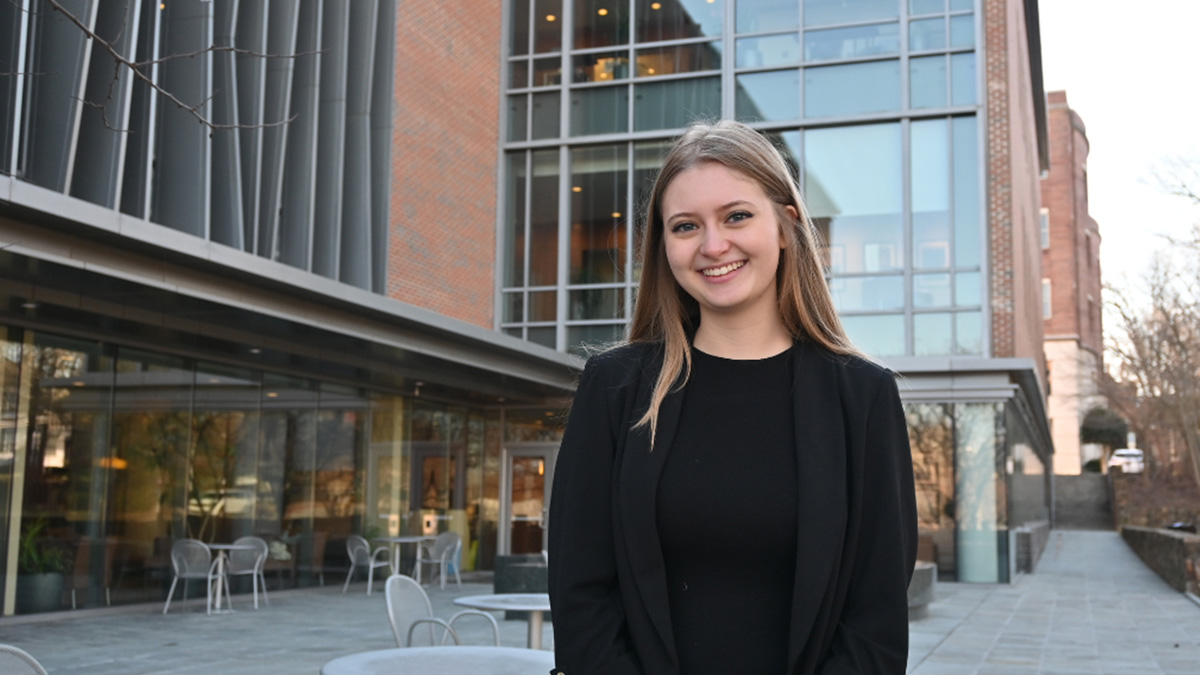ER doctor rescues neighbor from fire
Using the method he teaches medical students, Dr. Abhi Mehrotra calmly guided her from a burning house.

Just after 1 p.m. on April 5, Dr. Abhi Mehrotra was walking his mini-labradoodle in his southwest Durham neighborhood when he saw black smoke coming from a house. He also saw that someone was inside the house, a woman standing at a window.
That’s when his unruffled demeanor and years of practicing emergency medicine kicked in.
Mehrotra, a UNC Hospitals physician and clinical professor in the UNC School of Medicine’s emergency medicine department, urged the woman with direct, but calm words to leave the house. She stepped away from the window, then returned to say that she couldn’t open the house’s doors, so Mehrotra pulled out the window screen. The woman put one leg over the windowsill, then said she was nervous. But Mehrotra wouldn’t let her stop and gently helped her down and to the sidewalk. Moments later, a large flaming chunk of the roof fell on the spot where they had stood.
“Part of our training in the emergency department is to maintain our sense of calm, and so I tried to keep things calm for her, while continuing to assess the situation,” said Mehrotra, who also coordinates all UNC Health system emergency departments.
Assessing situations is fundamental to emergency medicine, Mehrotra said. In fact, he became a resident at the UNC School of Medicine in 2000 so that he could train with Dr. Judith Tintinalli, the world’s expert in the assessment process. Tintinalli, professor and chair emeritus in the school’s emergency medicine department, wrote the definitive and hefty textbook on the topic. Mehrotra keeps a copy of “Tintinalli’s Emergency Medicine” on his office bookshelf.

Dr. Abhi Mehrotra
By the end of the residency, Mehrotra knew that he wanted a position in which he could see patients and teach medical students and residents. Carolina offered him a job, and he’s been here for 21 years. Mehrotra teaches what he learned – how to find an immediate intervention to stabilize a patient. All medical students do an ED rotation, regardless of their specialty.
“It’s about having a systematic approach,” he said. “During the initial assessment of any critical patient, it’s the ABCs – airway, breathing, circulation. You synthesize all the data elements – their medical history, what’s going on – and assess the diagnostic tests and therapeutic items you need to do, what medications are needed, then determine what the potential problems could be.” After that differential diagnosis and stabilization, he and the medical team look for a more precise diagnosis.
Mehrotra followed a similar process on the day of the fire. He first smelled the smoke and thought a neighbor was barbecuing. But when he saw the smoke increasing and the woman at a window, his inherent training took over.
After firefighters and paramedics arrived on the scene, Mehrotra left for his shift at the UNC Hospitals emergency department in Chapel Hill. He wound up treating a firefighter who had been injured in the roof collapse. It was just another day of unexpected challenges, teaching and learning.
“I learn something every shift. Each patient encounter is a humbling experience. I hope I portray that lesson to our residents,” Mehrotra said. “There are times when it is about the highly experienced nurses that you learn from while treating the patient, and other people with specialized skills like respiratory techs. It is a complete, team-based environment. I just have the honor of leading the team.”







